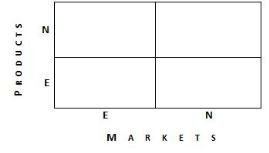There has been so much written on this topic that it’s hard to come up with anything “new”. Well, as far as leadership is concerned, there is not a lot of “new”. It’s about people, and leaders going back to Hannibal have exhibited many of the same traits – here is my view of those traits that set leaders apart. It is based on the search work I have done and leaders I have met, my experience over 10 years as a CEO, and some good stuff I have read. Great CIO’s typically:
- Possess an Integrative mind. A CIO who can see and connect the dots.
- Are Life-long learners. This factor is seen as the strongest predictor of success across any industry. These first two factors often accompany someone who has been successful in many environments and has a globally diverse experience base. The right candidate will understand the requirement of modifying behavior to achieve impact in differing market settings and cultures.
- Create a compelling vision, focus the organization around that vision, and execute on it. Great communication skill goes hand in hand with this.
- Build and motivate teams. Top CIOs are able to attract top talent and challenge them to perform at exceptional levels. The most successful teams are often cross-functional and multi-cultural, and the leader is able to capture the collective intelligence of the organization in solving business problems. A buzz phrase here would be ‘encourage the heart’.
- Drive a customer focused/game-changing project. Successful CIOs have typically been responsible for a major game changing corporate initiative. Sometimes they are lucky to be in the right place at the right time, but often the CIO has seen an opportunity to add value, and seized it. The Haas School of Business Renaissance CIO project identified a number of transformational CIOs who had enduring impact through key undertakings such as Dawn Lapore – online trading at Schwab; Max Hopper – Sabre online air reservation system; Rob Carter – online shipment tracking at FedEx. For current CIOs, opportunities exist to have big organizational impact with the emergence of technologies such as:
- Cloud (SaaS, PaaS and IaaS).
- Social (e.g., crowdsourcing for helpdesk and product development).
- Mobile. Delivering organizational capability and products in a mobile world.
- Big Data and Small Data (analytics for zero unplanned maintenance, product innovation, business performance improvement).
- Consumerization and BYOD. (Flexibility, customer satisfaction and cost management).
- Develop a deep knowledge of the business. This often drives candidate selection toward industry insiders. However, there are notable successes where candidates from different industries have had enormous and enduring impact. I placed Phil Fasano at Kaiser Permanente. He came from Financial Services and brought organizational change skills and forward-thinking capability that have made him a standout leader. He has now been at Kaiser for six years, and not only has he revolutionized the way KP does business, but he is also having impact on a global scale. Phil recently published a book entitled “Transforming Healthcare, the Financial Impact of Technology, Electronic Tools and Data Mining”. Not bad for a guy who used to worry about your credit card balances!
- Have strong influencing capability. Top quality CIOs understand that they need to deliver a functional operating platform, but as important is their ability to work with business unit heads to help drive value. A CIO must understand operational goals, and explain how technology can either enable or improve business outcomes. He or she can then push to the front of the bus and help with revenue generation activity.
- Are trusting and trustworthy. A capable CIO must develop strong relationships across the business. We have found that leaders who have a strong EQ (emotional intelligence), and are principled in approach, have enduring impact.
